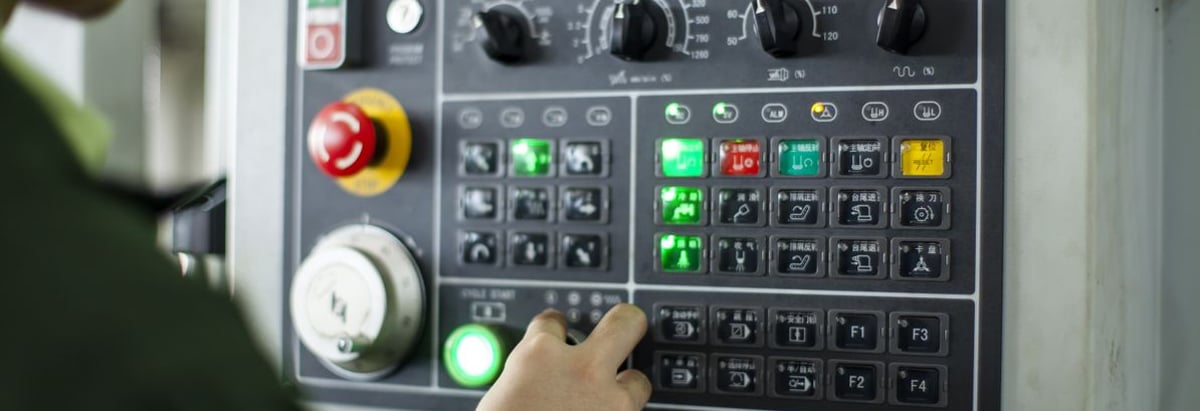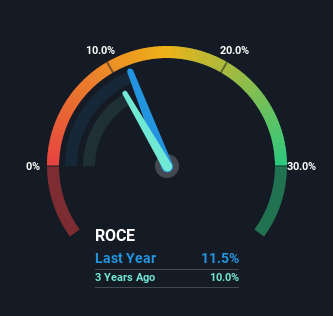- United States
- /
- Electronic Equipment and Components
- /
- NasdaqGS:FLEX
Flex (NASDAQ:FLEX) Hasn't Managed To Accelerate Its Returns

Did you know there are some financial metrics that can provide clues of a potential multi-bagger? In a perfect world, we'd like to see a company investing more capital into its business and ideally the returns earned from that capital are also increasing. If you see this, it typically means it's a company with a great business model and plenty of profitable reinvestment opportunities. With that in mind, the ROCE of Flex (NASDAQ:FLEX) looks decent, right now, so lets see what the trend of returns can tell us.
What is Return On Capital Employed (ROCE)?
For those that aren't sure what ROCE is, it measures the amount of pre-tax profits a company can generate from the capital employed in its business. To calculate this metric for Flex, this is the formula:
Return on Capital Employed = Earnings Before Interest and Tax (EBIT) ÷ (Total Assets - Current Liabilities)
0.11 = US$987m ÷ (US$19b - US$11b) (Based on the trailing twelve months to March 2022).
So, Flex has an ROCE of 11%. That's a pretty standard return and it's in line with the industry average of 11%.
Check out our latest analysis for Flex

Above you can see how the current ROCE for Flex compares to its prior returns on capital, but there's only so much you can tell from the past. If you're interested, you can view the analysts predictions in our free report on analyst forecasts for the company.
How Are Returns Trending?
While the current returns on capital are decent, they haven't changed much. The company has employed 41% more capital in the last five years, and the returns on that capital have remained stable at 11%. Since 11% is a moderate ROCE though, it's good to see a business can continue to reinvest at these decent rates of return. Over long periods of time, returns like these might not be too exciting, but with consistency they can pay off in terms of share price returns.
On a side note, Flex's current liabilities are still rather high at 55% of total assets. This can bring about some risks because the company is basically operating with a rather large reliance on its suppliers or other sorts of short-term creditors. Ideally we'd like to see this reduce as that would mean fewer obligations bearing risks.
The Key Takeaway
To sum it up, Flex has simply been reinvesting capital steadily, at those decent rates of return. However, over the last five years, the stock hasn't provided much growth to shareholders in the way of total returns. That's why we think it'd be worthwhile to look further into this stock given the fundamentals are appealing.
On a separate note, we've found 1 warning sign for Flex you'll probably want to know about.
While Flex may not currently earn the highest returns, we've compiled a list of companies that currently earn more than 25% return on equity. Check out this free list here.
New: AI Stock Screener & Alerts
Our new AI Stock Screener scans the market every day to uncover opportunities.
• Dividend Powerhouses (3%+ Yield)
• Undervalued Small Caps with Insider Buying
• High growth Tech and AI Companies
Or build your own from over 50 metrics.
Have feedback on this article? Concerned about the content? Get in touch with us directly. Alternatively, email editorial-team (at) simplywallst.com.
This article by Simply Wall St is general in nature. We provide commentary based on historical data and analyst forecasts only using an unbiased methodology and our articles are not intended to be financial advice. It does not constitute a recommendation to buy or sell any stock, and does not take account of your objectives, or your financial situation. We aim to bring you long-term focused analysis driven by fundamental data. Note that our analysis may not factor in the latest price-sensitive company announcements or qualitative material. Simply Wall St has no position in any stocks mentioned.
About NasdaqGS:FLEX
Flex
Provides manufacturing solutions to various brands in Asia, the Americas, and Europe.
Outstanding track record with flawless balance sheet.
Similar Companies
Market Insights
Community Narratives




